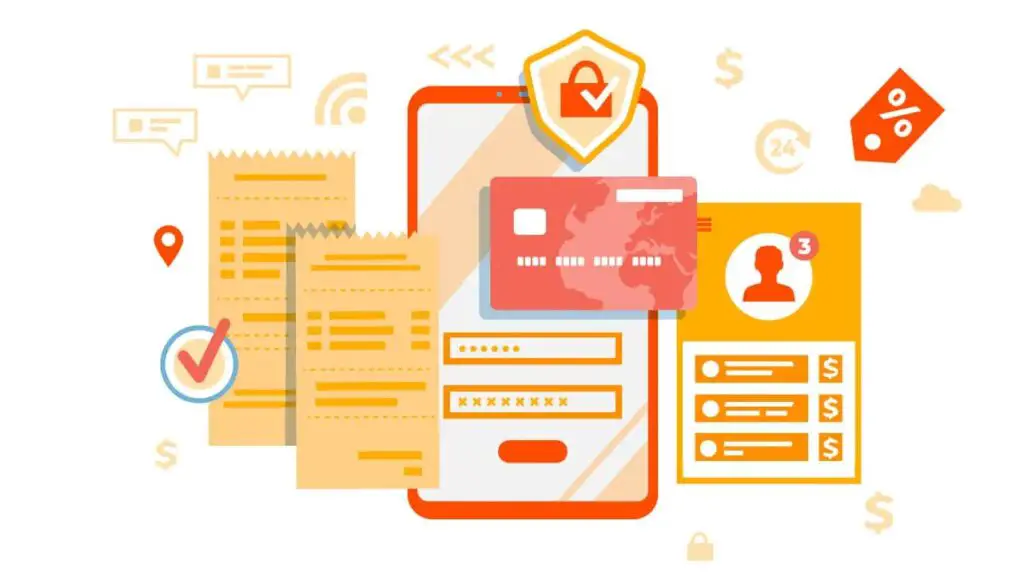Mobile banking has revolutionized the way we manage our finances. With just a few taps on our smartphone screens, we can access our accounts, transfer funds, and even pay bills. However, with this convenience comes the need to ensure the security of our sensitive financial information. In this article, we will discuss the best practices for mobile banking security, providing you with the knowledge and tools to keep your money safe. Whether you’re a seasoned mobile banking user or just getting started, these practices will help protect your financial well-being. So let’s dive in and explore the world of best practices for mobile banking security.
Best Practices for Mobile Banking Security
Mobile banking has become increasingly popular in recent years, offering convenience and accessibility to users. However, with the rise of mobile banking comes the need for heightened security measures to protect sensitive financial information. In this article, we will discuss the best practices for mobile banking security to ensure that your financial transactions are safe and secure.
1. Update Your Mobile Banking App Regularly
Keeping your mobile banking app up to date is crucial for maintaining security. App updates often include security patches and bug fixes that address any vulnerabilities that may exist. By regularly updating your app, you can ensure that any potential security flaws are addressed promptly.
2. Use a Secure Network
When accessing your mobile banking app, make sure to use a secure network. Avoid using public Wi-Fi networks, as they can be easily compromised by hackers. Instead, rely on secure networks that require passwords or use your cellular data network for a safer connection.
3. Create Strong, Unique Passwords
A strong, unique password is essential for protecting your mobile banking account. Avoid using easily guessable information like your name or date of birth. Instead, create a complex password consisting of a combination of letters, numbers, and symbols. Additionally, ensure that you use different passwords for each of your online accounts to minimize the risk of multiple accounts being compromised if one password is breached.
4. Enable Two-Factor Authentication
Two-factor authentication adds an extra layer of security to your mobile banking account. With this feature enabled, you will need to provide a second verification method, such as a fingerprint scan or a unique code sent to your registered mobile number, in addition to your password. This ensures that even if someone manages to obtain your password, they won’t be able to access your account without the additional verification.
5. Be Cautious of Phishing Attempts
Phishing attempts are common methods used by cybercriminals to trick users into revealing their sensitive information. Be wary of unsolicited emails, messages, or phone calls that request personal or banking details. Legitimate banks will never ask you to provide sensitive information through email or text messages. If you receive any suspicious communications, contact your bank directly to verify their authenticity.
6. Install Reliable Mobile Security Software
Protecting your mobile device from malware and other security threats is crucial for secure mobile banking. Install reputable mobile security software that includes features such as malware detection, app scanning, and anti-phishing protection. Regularly update the software to ensure it is equipped with the latest security features.
7. Enable Remote Lock and Wipe
In case your mobile device is lost or stolen, enabling remote lock and wipe features can help protect your sensitive banking information. These features allow you to remotely lock your device or erase all data, ensuring that unauthorized individuals cannot access your mobile banking app and the associated information.
8. Be Mindful of App Permissions
When installing a mobile banking app, pay attention to the permissions it requests. Only grant necessary permissions that are essential for the app’s functionality. Be cautious if an app requests excessive permissions that seem unrelated to its purpose, as it may indicate malicious intent.
9. Check for Secure Connections
Before entering any sensitive information, ensure that the mobile banking app is using a secure connection. Look for “https://” in the URL and a lock symbol in the browser address bar. This indicates that the connection is encrypted, ensuring that your data remains confidential during transmission.
10. Regularly Monitor Your Account
Stay vigilant by regularly monitoring your mobile banking account for any suspicious activity. Keep track of your account balances, transaction history, and any notifications sent by your bank. If you notice any unauthorized transactions or unusual account activity, report it to your bank immediately.
11. Educate Yourself About Mobile Banking Security
Stay informed about the latest mobile banking security trends and best practices. Banks often provide resources and educational materials on their websites to help users understand how to protect their mobile banking accounts. Take advantage of these resources to enhance your knowledge and stay up to date with the evolving security landscape.
By following these best practices for mobile banking security, you can significantly reduce the risk of falling victim to mobile banking fraud or compromise. Remember, proactive steps to safeguard your information and being cautious while using your mobile banking app are key to maintaining a secure and hassle-free banking experience.
10 Online Banking Security Tips – Secure Your Online Banking Payment
Frequently Asked Questions
Frequently Asked Questions (FAQs)
How can I protect my mobile banking app from unauthorized access?
To protect your mobile banking app from unauthorized access, you should follow these best practices:
- Enable biometric authentication, such as fingerprint or facial recognition, for app login.
- Set a strong and unique password for your mobile banking app.
- Avoid using public Wi-Fi networks when accessing your mobile banking app.
- Regularly update your mobile banking app to ensure you have the latest security patches.
- Be cautious about downloading apps from third-party sources, as they may contain malware.
Are mobile banking apps secure?
Yes, mobile banking apps can be secure if you follow recommended security practices. Most banks employ encryption and other security measures to protect your data. However, it is important to also take personal precautions, such as setting strong passwords and enabling two-factor authentication.
How can I protect my mobile device from malware?
To protect your mobile device from malware, you should:
- Only download apps from official app stores, such as Google Play Store or Apple App Store.
- Regularly update your mobile device’s operating system to install security patches.
- Install a reputable mobile antivirus app to scan for and remove any potential malware.
- Avoid clicking on suspicious links or downloading attachments from unknown sources.
- Be cautious when granting permissions to apps and only provide necessary permissions.
What should I do if my mobile device is lost or stolen?
If your mobile device is lost or stolen, you should take the following steps:
- Contact your bank immediately to report the incident and request a temporary freeze on your mobile banking app.
- Change your mobile banking app password and enable two-factor authentication if available.
- Remotely wipe your mobile device to erase any sensitive information it may contain.
- Notify your mobile service provider to disable or block your SIM card.
Is it safe to use public Wi-Fi for mobile banking?
Using public Wi-Fi for mobile banking poses security risks. It is recommended to avoid using public Wi-Fi networks, especially for sensitive transactions. If you need to access your mobile banking app while on the go, use your mobile data or a trusted Wi-Fi network that requires a password.
What is two-factor authentication and how does it enhance mobile banking security?
Two-factor authentication adds an extra layer of security to your mobile banking app. It requires you to provide two forms of identification before gaining access, usually a password and a unique code sent to your registered mobile number. This helps prevent unauthorized access even if your password is compromised.
Should I enable notifications for my mobile banking app?
Enabling notifications for your mobile banking app can be beneficial for security purposes. It allows you to receive real-time alerts for any suspicious activities or transactions on your account. This way, you can quickly take action if you notice any unauthorized access or fraudulent activity.
Are there any risks associated with using mobile banking apps?
While mobile banking apps are generally secure, there are some risks to be aware of:
- Phishing attacks: Be cautious of emails or messages pretending to be from your bank and asking for personal information.
- Malware: Downloading apps from untrusted sources or clicking on malicious links can expose your device to malware.
- Lost or stolen devices: If your mobile device is lost or stolen, an unauthorized person may try to access your mobile banking app.
By following best practices for mobile banking security, you can significantly reduce these risks and enhance the overall security of your mobile banking experience.
Final Thoughts
In conclusion, implementing best practices for mobile banking security is crucial in safeguarding personal and financial information while using mobile banking services. Users should always keep their devices updated with the latest security patches and use strong, unique passwords for their banking apps. It is important to be cautious of phishing attempts and only download apps from trusted sources. Enabling multi-factor authentication provides an extra layer of security. Regularly monitoring accounts and reporting any suspicious activity promptly is essential. By following these best practices for mobile banking security, users can ensure a safer and more secure banking experience.

